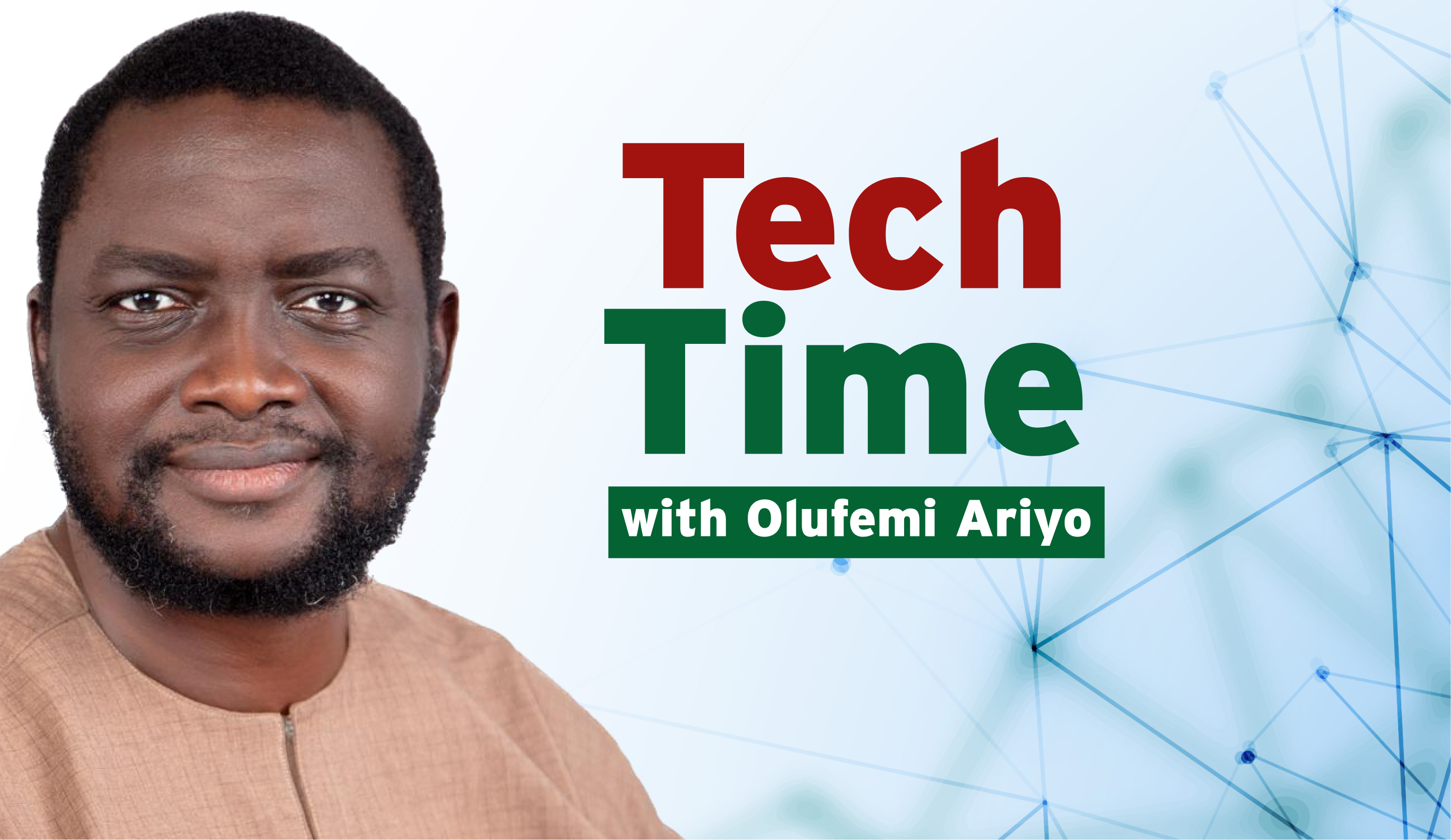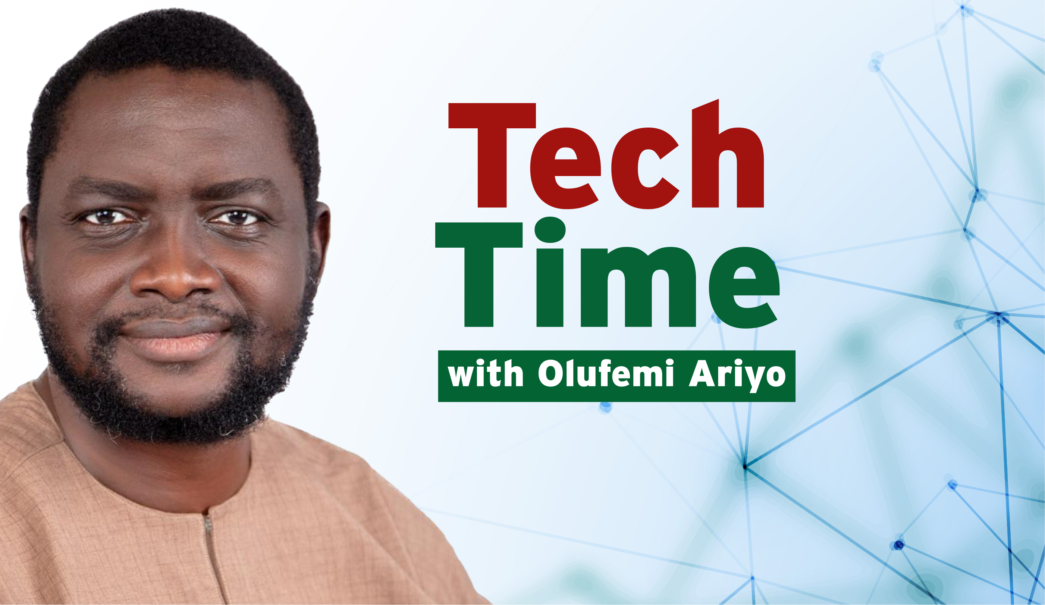Building a sustainable Work-From-Home (WFH) model in Nigeria requires more than reliable internet—it demands systems and mindsets tailored to the country’s unique realities. Frequent power outages, unstable connectivity, and security risks present real challenges, but these can be mitigated through adaptive leadership, flexible structures, and thoughtful support.
This paper presents five foundational pillars: cultivating a mindset of resilience and problem-solving over dependence on perfect tools; prioritising flexible, output-driven work over rigid schedules; investing in small-scale infrastructure support like data stipends and backup power; promoting trust and clear communication rather than micromanagement; and embedding digital security and employee wellness into remote work policies. The key takeaway is that Nigeria need not replicate global WFH models, instead, by embracing its own context with empathy, flexibility, and innovation, it can build remote work systems that are not only viable but genuinely empowering.
“You never change things by fighting the existing reality. To change something, build a new model that makes the old model obsolete” said Buckminster Fuller. Over the past decade—especially accelerated by the COVID-19 pandemic—the global workforce has undergone a profound shift from centralised office environments to more flexible, remote work arrangements. This evolution has redefined not only how and where people work, but also opened new possibilities for inclusivity, productivity, and work-life balance. Many companies have embraced hybrid or fully remote models, citing benefits such as cost savings, access to diverse talent pools, and increased employee satisfaction.
However, this transformation is marked by stark inequalities. While developed nations often have the infrastructure to support seamless remote work, many developing countries (including Nigeria) face a more structurally constrained environment. Frequent power outages, unreliable internet access, limited access to quality equipment, and broader systemic challenges significantly hinder widespread work-from-home (WFH) adoption.
Advertisement
For Nigerian professionals and businesses, remote work is less a matter of convenience and more a test of resilience, creativity, and strategic adaptation. Yet despite these limitations, the promise of remote work in Nigeria remains viable—if approached with the right mindset, flexible systems, and locally relevant tools. The real question is not whether remote work can succeed in Nigeria, but how to build a model that reflects its lived realities—one that prioritises flexibility over rigidity, outcomes over hours, and innovation over imitation. This paper explores five key pillars for designing a sustainable, context-sensitive WFH model within Nigeria’s unstable but opportunity-rich landscape.
1. Mindset Over Infrastructure
Given our current reality in Nigeria, where basic infrastructure such as electricity and internet connectivity can be highly unreliable, success in remote work often hinges less on technology and more on the mindset of the people involved. While it is easy to focus on the lack of tools, the real differentiator is how individuals and teams respond to those limitations. A resilient, growth-oriented mindset (anchored in adaptability, creativity, and problem-solving) is the foundation of any sustainable work-from-home (WFH) model in such unstable environments.
Advertisement
Notably, remote work in Nigeria demands a daily balancing act: navigating sudden power cuts, unstable internet, or even socio-political disruptions. These are not occasional anomalies; they are recurring challenges that test both patience and resourcefulness. Without the right mindset, these obstacles can easily translate into disengagement, frustration, and burnout. However, for individuals and organisations who view such constraints not as deal-breakers but as design challenges, they become an opportunity to innovate and build more context-appropriate solutions. This mindset shift however, must start with leadership. Employers and managers set the tone for how the team perceives and reacts to adversity. Instead of penalising delays caused by external factors, leaders must prioritise empathy, focus on outcomes, and support autonomy. Employees should be encouraged to take ownership of their productivity and explore localised solutions that suit their unique work environments.
For instance, some may choose to work in co-working spaces when power supply at home is unstable, while others may shift their work hours to align with periods of better connectivity. Asynchronous communication should be normalised to accommodate these variations, allowing team members to contribute meaningfully without being bound to rigid, real-time expectations. Some best practices include:
- Promote a Solutions Culture: Form an employer perspective, cultivate an organisational culture where sharing practical workarounds is encouraged and rewarded. Set up dedicated communication channels (e.g., Slack threads or internal forums) where team members can exchange tips about coping with infrastructure challenges. For instance, highlight a team member’s discovery of a stable neighbourhood internet café or effective load-shedding schedules in team meetings. Employers can also curate a knowledge base of locally-relevant tools, vendors, and hacks that help mitigate daily work disruptions. On the flip side to address employees, each should be proactive in documenting and sharing their unique coping strategies. This contributes to team resilience and also builds personal credibility as a problem-solver. Sharing what works (whether it is the most affordable data bundle or a power-saving work schedule) can encourage mutual support and collective learning.
- Decentralise Problem-Solving: Employers need not mandate a one-size-fits-all remote work policy. They need to allow flexibility for employees to create work setups that reflect their specific realities. Managers should focus on clear deliverables and deadlines, not rigid schedules or processes. Providing frameworks for autonomy helps build trust, boosts morale, and ensures that staff are empowered to manage their productivity in alignment with their environment. Employees, on the other hand, must realise that with greater autonomy comes responsibility. Employees must understand the expectations and deliver outcomes consistently. They should also communicate proactively when facing disruptions and propose alternative solutions or adjusted timelines. Taking ownership of one’s work context while aligning with broader team goals is key.
- Model Adaptive Leadership: Employers should openly acknowledge the unique challenges their teams face, instead of pretending that global remote work norms apply equally everywhere. Sharing their own adaptive strategies (like using offline tools during blackouts or prioritising asynchronous updates) can humanise leadership and build trust. Recognising and celebrating staff who navigate instability creatively reinforces a culture of adaptability. Besides, employees also play a leadership role in shaping work culture. By demonstrating resilience, suggesting improvements, and supporting colleagues during disruptions, they contribute to a more agile organisation. Those who take initiative, rather than complain, often emerge as informal leaders and problem-solvers within the team.
- Normalise Flexibility: Organisational employers must accept that infrastructure-related inconsistencies are not employee failures but environmental realities. Build flexibility into performance management systems: focus on output, not presence. Implement policies like flexible working hours, adjustable meeting times, and backup asynchronous workflows. This flexibility not only supports productivity but also reduces burnout and attrition. From an employee view, flexibility is not an excuse for underperformance, it is a tool for achieving consistent results despite instability. Employees should use their discretion to work during high-productivity windows (e.g., early mornings or late evenings when power and internet are more stable). Communicating clearly about one’s availability and progress ensures that flexibility improves, rather than disrupts, team cohesion.
In summary, while infrastructure gaps in Nigeria present real limitations, they are not insurmountable. What separates thriving remote teams from struggling ones is a collective mindset of agency, ingenuity, and adaptability. With the right cultural and psychological foundation, even the most under-resourced environments can support meaningful and productive remote work.
2. Design for Flexibility, Not Perfection
Advertisement
Rigid, always-online work expectations often backfire in Nigeria’s challenging infrastructure landscape. Such demands not only place undue stress on employees but also lead to inconsistent performance and avoidable burnout for organisations. In contrast, a well-structured, flexible model (built on clear deliverables, mutual trust, and empathetic leadership) allows both employers and employees to thrive, even amidst unpredictability.
Employer Perspective: Build for Output, Not Presence
Rather than enforcing traditional 9-to-5 online visibility, employers should structure remote work around clear Key Performance Indicators (KPIs), deliverables, and project timelines. What matters is what gets done, not when or where it gets done.
- Set clear expectations for each role, including specific tasks, deadlines, and quality benchmarks.
- Adopt asynchronous workflows so that employees don’t have to work in real-time to be considered productive. Use collaborative tools like Trello, Notion, or Google Workspace to track tasks and allow work to progress regardless of connectivity issues.
- Eliminate micromanagement by creating a performance review culture based on evidence of outcomes, not hours online. This builds trust, reduces stress, and empowers staff to perform optimally.
- Support flexibility with structure—offer optional check-in windows, flexible office hours, and rolling deadlines to give employees room to balance professional and personal responsibilities.
Employee Perspective: Own Your Work, Own Your Time
Advertisement
For employees, flexibility is a privilege and a responsibility. It offers the freedom to work around environmental constraints, but it also demands discipline, initiative, and self-accountability.
- Work smart, not just hard: If electricity is more stable in the early morning or late evening, plan focused work blocks accordingly. Use offline tools and back-up plans to maintain momentum.
- Communicate proactively: Let your team know when you’re likely to be offline, and update them regularly on progress. Transparency builds trust and keeps collaboration flowing.
- Prioritise outputs: Focus on meeting agreed-upon goals and timelines rather than obsessing over clocked hours. Delivering consistent results earns greater autonomy and respect within the team.
- Use downtime productively: When you’re unable to work online, catch up on reading, planning, or ideation work that doesn’t require connectivity. This way, you remain engaged even during disruptions.
Best Practice: Implement Outcome-Based Management Systems
Advertisement
- Define Deliverables Clearly: Every employee should know exactly what “success” looks like for a given task or project.
- Use Project Management Tools: Systems like Asana, Monday.com, or Jira can track assignments and deadlines, enabling asynchronous collaboration and visibility.
- Offer Flexibility in How Work Gets Done: Encourage employees to choose their most productive hours—whether early mornings, midday, or night—and trust them to deliver accordingly.
- Check-In Without Hovering: Schedule weekly or biweekly team syncs to align on priorities, but avoid daily check-ins unless necessary. Let output drive the relationship—not constant supervision.
In environments where “perfect” working conditions are rare, the key to building a sustainable remote work culture lies in designing for real-life unpredictability, not against it. By emphasising flexibility, trusting team members to manage their time wisely, and holding everyone accountable to outcomes (not appearances) organisations can build a model that succeeds even in difficult contexts. This is more than just a stop-gap for unstable environments, but a blueprint for a healthier, more human-centred future of work.
3. Invest in Hybrid Infrastructure Support
Advertisement
With our current Nigerian reality, where national infrastructure challenges are persistent such as frequent power outages, expensive or unreliable internet access, and unsafe commuting conditions, employers cannot solve systemic issues, but they can meaningfully mitigate their impact on remote teams. Creating a sustainable work-from-home (WFH) culture in such an environment requires targeted micro-investments that bridge the infrastructure gap. These investments signal that the employer understands local realities and is committed to enabling productivity, stability, and employee well-being—regardless of external limitations.
Employer Perspective: Enable Productivity Through Micro-Support
Advertisement
Employers should approach infrastructure not as an individual’s responsibility alone, but as a shared business cost that directly affects performance, morale, and retention. Supporting staff with practical resources can turn “inconsistent” workers into dependable contributors.
- Power Support: Offer stipends or reimbursements for basic inverter systems, rechargeable power banks, or solar kits. Inexpensive solutions like 300–500W inverters with batteries can power routers and laptops during outages.
- Internet Subsidies: Provide monthly data allowances or reimbursements for MiFi/4G subscriptions from reliable ISPs. Even ₦5,000–₦10,000 monthly can ensure smoother virtual collaboration.
- Access to Co-Working Hubs: For employees in especially unstable locations, subsidize shared desk spaces in hubs with power and internet. It offers both a fallback and a change of environment when needed.
- Device Support: Offer options to lease, loan, or co-finance laptops, noise-canceling headphones, or backup modems—tools that enable high-quality remote engagement.
- Local Vendor Partnerships: Partner with local suppliers or cooperatives to offer discounted tech and power solutions to employees at scale.
These support systems can be formalised through a “Remote Work Infrastructure Policy”, with clear guidelines on allowances, eligible items, and claim procedures.
Employee Perspective: Leverage Support, Improve Reliability
For employees, these support programs offer more than convenience—they are critical tools for personal effectiveness and professional consistency. Taking advantage of employer-subsidised infrastructure allows for better planning, fewer disruptions, and improved credibility with teams and clients.
- Invest Smartly: Use provided stipends or subsidies to address your most pressing limitations—whether that’s a MiFi upgrade, fuel for a generator, or backup lighting.
- Be Transparent: Track usage of any allowances and give feedback to employers about what’s working. This improves future iterations of support policies.
- Build Redundancy: Use support to create redundancy—have a primary and backup power/internet option where possible. For instance, combine a basic inverter with a UPS or have two SIMs from different networks.
- Take Initiative: Even small out-of-pocket investments (paired with employer support) can greatly enhance work-life balance and dependability.
Best Practice: Develop a Tiered Support Framework
Instead of a one-size-fits-all policy, consider tiered support based on roles or needs. For example:
- Tier 1: Full-time remote staff receive ₦10,000/month data and ₦20,000/year inverter co-funding.
- Tier 2: Hybrid staff get smaller data stipends and access to a local hub once weekly.
- Tier 3: Ad hoc/project-based roles receive allowances only during major project timelines.
You could also offer optional opt-ins for equipment financing (e.g., laptop upgrade loans repaid in 6–12 months) or an “emergency tech fund” for staff facing abrupt power or device failures.
Infrastructure instability may be outside the control of organisations, but thoughtful investment in employee resilience is not. Hybrid infrastructure support demonstrates empathy, drives loyalty, and enhances performance—turning environmental weaknesses into managed risks. In the Nigerian WFH context, small but strategic support creates the continuity and confidence remote work needs to succeed. By treating basic infrastructure like an enabler (not a luxury) organisations can future-proof their workforce against national instability.
4. Prioritise Trust and Communication
At the heart of every successful remote team lies a culture of trust and transparent communication. This becomes even more crucial in unpredictable environments like Nigeria, where power outages, bandwidth limitations, and occasional social unrest can interrupt workflow. When team members are scattered and working in varying conditions, trust fills the gap where infrastructure falters. It empowers individuals to make responsible decisions and fosters a sense of psychological safety (where no one feels the need to constantly justify their productivity).
Employer Perspective: Communicate Clearly, Lead with Empathy
Rather than using unstable infrastructure as an excuse for top-down micromanagement, employers should aim to build structure around clarity, not control. Trusting your team means setting clear expectations, enabling them with tools, and checking in without hovering.
Practical Approaches:
- Set Communication Norms: For example, define expected response windows (e.g., “Reply to internal messages within 4–6 hours”) so employees don’t feel pressured to be online at all times, especially when they’re managing power or internet issues.
- Asynchronous Updates: Use Notion, Trello, or Airtable to create shared project dashboards. This helps teams stay aligned even if someone’s connection drops for a day.
- Slack and WhatsApp: Designate specific channels/groups for daily standups, urgent issues, or even “just checking in.” For instance, a Lagos-based fintech might use a WhatsApp group for lightweight updates, and Slack for structured conversations.
- Weekly Video Syncs: Reserve bandwidth-heavy interactions (Zoom/Teams) for high-priority meetings. Ensure recordings and notes are shared afterward so those with poor connectivity can stay in the loop.
- Transparency from Leadership: Leaders should model openness about their own disruptions (“My inverter’s down; I’ll be offline till 3 PM”), which normalises unpredictability and encourages honest updates.
Employee Perspective: Be Proactive and Responsible
Trust is reciprocal. For employees, the responsibility is to stay visible and accountable, even when circumstances become difficult.
What That Looks Like:
- Communicate Interruptions Early: If PHCN takes light and your backup fails, drop a quick message: “Power’s out; resuming work by 2 PM.” This avoids confusion or perceived absence.
- Use Status Indicators: Set Slack statuses like “On data backup,” “Power down – async mode,” or “Spotty network, using WhatsApp.”
- Log Progress: Brief daily updates—“Completed X, starting Y”—help managers and peers stay informed without over-explaining.
- Lean on Low-Bandwidth Options: When Zoom isn’t feasible, offer to switch to a phone call or WhatsApp voice note. Keeping communication going, even minimally, is better than silence.
Examples from the Field
- A Lagos-based tech nonprofit adopted a hybrid Slack + WhatsApp model where team leads post daily summaries at 9 AM, and members add progress notes by 5 PM. This created clarity without constant messaging.
- A remote marketing team in Abuja created a shared Google Sheet for logging weekly tasks. Each person updates it asynchronously. The team leader reviews it during a 15-minute weekly call and posts a feedback summary on Notion.
- A startup in Port Harcourt introduced “communication fallback plans”—so when a team member can’t access Slack, they know to text their buddy or lead via SMS or WhatsApp. It maintains flow despite sudden blackouts.
Best Practice: Build a Resilient Communication Stack
A good communication setup is layered and flexible, not reliant on one channel.
For example:
- Primary tools: Slack (daily messaging), Notion (project management), Zoom (weekly check-ins)
- Backup tools: WhatsApp (real-time fallback), Google Docs (shared updates), SMS (for urgent alerts)
- Shared culture: Encourage short, clear updates. Use emojis or tags to signal urgency, mood, or help needed.
To remain productive in Nigeria’s volatile infrastructure landscape, communication goes beyond just a nice-to-have, to becoming a resilience strategy. A strong WFH culture is not built on perfect connectivity or full-time presence but on clarity, compassion, and consistent communication habits. By prioritising trust over surveillance and structure over rigidity, employers and employees together can build a team that thrives even in instability. Remote work may rely on technology, but it is sustained by relationships and trust.
5. Security and Wellness Matter
Remote work in Nigeria extends beyond the basics of internet access and power supply. It also demands a conscious commitment to security (both digital and physical) and wellness, including mental, emotional, and financial well-being. These aspects are often overlooked but are critical for building a sustainable and humane work-from-home (WFH) model. In a setting where phishing scams are common, where data protection laws are still evolving, and where physical insecurity can impact daily life, employers and employees must jointly prioritise safety and wellness as foundational pillars of remote productivity.
Employer Perspective: Build a Safe and Supportive WFH Ecosystem
Forward-thinking employers recognise that protecting their remote teams means addressing a broad spectrum of risks, from cyber breaches to burnout.
Practical Strategies:
(a). Invest in Digital Security:
- Provide cybersecurity tools: Employers should equip remote teams with basic security tools such as:
- VPNs for encrypted connections
- Antivirus software (e.g., Bitdefender, Norton)
- Password managers (e.g., LastPass, Bitwarden)
- Two-factor authentication (2FA) for all company accounts
- Training on phishing and scams: Short quarterly webinars or shared tip sheets can raise awareness about common threats (e.g., suspicious links, social engineering, fake job offers).
(b). Prioritise Physical Safety:
- Offer flexible work hours so employees can avoid movement during times of local unrest, traffic gridlock, or insecurity (especially in high-risk zones).
- Provide emergency communication protocols like WhatsApp groups for rapid check-ins during crises (e.g., elections, protests, weather disruptions).
(c). Embed Wellness in Culture:
- Normalise mental health support as part of team culture:
- Create wellness days separate from annual leave
- Sponsor access to virtual therapy platforms like Mytherapist.ng or Mentally Aware Nigeria
- Start weekly check-in rituals like “How’s your head, how’s your heart?” during team calls
- If possible, offer health insurance that includes mental health coverage or a small monthly “wellness allowance” that employees can spend on gym, yoga, therapy, or rest.
Employee Perspective: Take Ownership of Your Safety and Health
While employers should lead in providing tools and frameworks, employees must also take responsibility for their own well-being and security by being proactive, vigilant, and honest about their needs.
Self-Protective Practices:
- Use secure networks: Avoid using public or unsecured Wi-Fi for sensitive work tasks. Use a VPN at all times.
- Update devices and software regularly to avoid vulnerabilities.
- Back up files to the cloud (Google Drive, Dropbox) in case of laptop theft or hard drive failure.
Mental Wellness Habits:
- Establish boundaries: Set a firm end time to your workday and resist the urge to stay online just to prove availability.
- Take intentional breaks: Even in blackout moments, use downtime for non-screen activities that support your mental clarity.
- Communicate proactively: Let your team know if you’re feeling overwhelmed or burnt out. WFH doesn’t mean you must suffer in silence.
Examples from the Field
- A tech startup in Abuja provides every employee with VPN access and anti-malware tools, alongside a monthly ₦10,000 stipend for mental wellness services (therapy, fitness classes, meditation apps).
- A nonprofit in Lagos created a crisis protocol during the #EndSARS protests, where employees could instantly inform their manager of unsafe travel conditions and switch to asynchronous work mode with no penalties.
- A remote-first fintech in Port Harcourt partnered with a local HMO to include mental health consultations and established a monthly “Mental Wellness Friday” where work shuts down at 2 PM.
Best Practice: Develop a Dual-Lens Security & Wellness Policy
Security and wellness are no longer HR afterthoughts, they are central to talent retention and productivity.
A strong policy might include:
- Cybersecurity Toolkit: Pre-installed software, mandatory password hygiene, cloud backups
- Emergency Response Framework: Steps for checking in during unrest or disasters
- Wellness Support Package: Days off, therapy access, and wellness stipends
- Training and Awareness Programs: Quarterly sessions on both cyber and mental health topics
Given Nigeria’s unique challenges, work-from-home models may not succeed without deliberate investment in security and wellness. A burnt-out, anxious, or digitally vulnerable employee is not only less productive, but at risk. By combining technical safeguards with human-centred care, both employers and employees can build a remote culture that is not just sustainable, but secure and healthy. In Nigeria, resilience at work begins with protecting the people behind the screens.
Conclusion
“It always seems impossible until it is done,” Nelson Mandela once said. While Nigeria presents significant challenges to remote work—from unreliable electricity and internet infrastructure to broader security and socio-economic instability—it also offers a unique opportunity to build resilient, context-driven work-from-home (WFH) models. Success in this environment won’t come from replicating Western templates, but from designing systems deeply attuned to local realities. By prioritising flexibility over rigidity, investing in targeted infrastructure support, fostering a culture of trust and open communication, and centring employee well-being and security, both employers and employees can co-create sustainable and productive remote work cultures. Ultimately, Nigeria’s most effective WFH strategies will emerge not from ideal conditions, but from empathy, adaptability, and innovation—turning challenges into springboards for homegrown solutions that reflect the country’s ingenuity and potential.
Thank you for the investment in patience, attention, and time. You can get more of such curated thoughts on my Medium: https://medium.com/@roariyo and LinkedIn: https://www.linkedin.com/in/olufemiariyo/ or send an email to [email protected]












